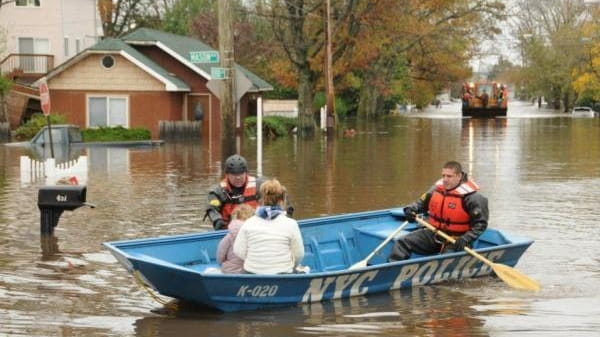Janison: De Blasio's options for emergencies

Residents evacuate Mason Ave. on Staten Island after Sandy. Credit: Residents evacuate Mason Avenue on Staten Island after Sandy. (Mayor's Office)
Terrorism, anthrax, and Superstorm Sandy — plus blizzards and blackouts — have permanently thrust New York City government into the business of disaster response and planning.
A mayor faces important choices of how to conduct that business — options that go beyond picking police, fire and health commissioners. Emergency-management professionals, whose job it is to prepare for grim scenarios, are watching to see the bureaucratic direction Mayor-elect Bill de Blasio takes.
One route could involve upgrading the clout of the city’s emergency management office, which Mayor Michael Bloomberg chose for several years to keep largely within the orbit of Police Commissioner Ray Kelly, who by most accounts was the administration’s most powerful and influential public-safety player.
In November 2001, city voters approved a charter amendment that gave the office, created in 1996, full department status. It said this department “shall be the lead agency in the coordination and facilitation of resources in incidents involving public safety and health, including incidents which may involve acts of terrorism.”
But critics felt Bloomberg ignored the intent of the new legal provision after taking office in January 2002. For example, Fire Department officials objected that City Hall protocols gave Kelly’s NYPD wide latitude over hazardous-materials incidents.
One question is whether de Blasio and company choose to take more literally this “lead agency” model. “I think you’ll see that happen,” said one source who declined to be identified but is familiar with some transition’s discussions. “I think de Blasio will want a strong public-safety component.”
Three weeks after the election, with transition discussions of all kinds under way, de Blasio aides weren’t sharing specifics on how the city approach might change once relevant commissioners are selected. De Blasio spokeswoman Lis Smith would only say: “Emergency preparedness and response will be among [his] highest priorities. He will build a team and structure that will be ready to respond quickly and effectively to a wide range of threats and keep New Yorkers safe in an emergency.”
During the campaign, Joe Lhota, the unsuccessful Republican candidate and a former deputy to Mayor Rudy Giuliani, suggested resuming a role for the pre-Bloomberg emergency-management office, including borough-based disaster planning.
Which is not to say that OEM has disappeared. Its full-time staff operates out of a downtown headquarters that replaced the former facility destroyed in the 9/11 attacks. It performs drills and relevant public-information campaigns.
Dan Janison is a Newsday columnist.
